Upcoming Sessions
- There are no upcoming sessions scheduled
See All Upcoming Sessions
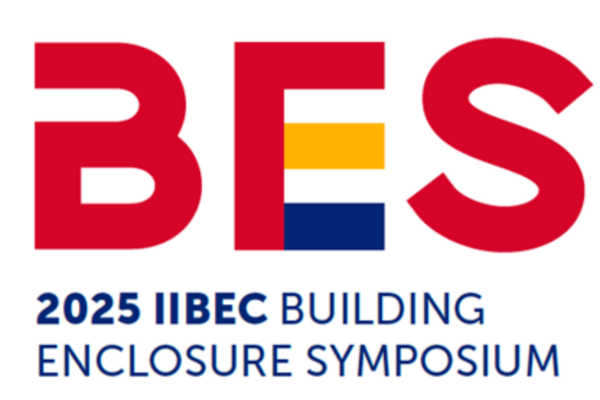
Course Overview This session was originally presented at the 2025 IIBEC Building Enclosure Symposium in St. Louis, Missouri. This course includes the following components: recording of the live session a summative assessment consisting of 10 multiple-choice questions two surveys required to claim continuing education credit Description Rehabilitation of existing building enclosures offers technical designers the opportunity to optimize building performance while bridging the owner’s goals and providing value for the owner. This paper outlines the benefits of early-stage planning and communication with an integrated holistic approach implemented throughout the predesign phase. For a technical designer, the amount of effort should be maximized in the predesign phase to maximize overall project value. Key tasks from the predesign phase are outlined. These include forming a team, identifying urgent issues and long-term goals, developing an owner’s project requirements, investigation, and site assessment. To conclude the predesign process, documentation that summarizes and materializes the findings and details of the predesign phase is also discussed, as are the design and construction phases. Roofing case studies including dead load and wind uplift calculations are used to exemplify the benefits of placing emphasis on the predesign phase to increase value for the owner. Course Recommended Prerequisite(s) The ideal level of prerequisite knowledge for this presentation includes the fundamentals of enclosure/roofing design and the general process for design and construction. Learners who understand building enclosure design concepts, including terminology and materials, will benefit the most. IIBEC Core Competencies: Roofing (R) Knowledge Level: Intermediate Presenter/Author Richard Ziegler, RRC, RRO, PE Principal Stantec Rick Ziegler is a principal at Stantec with specialized expertise in the design and rehabilitation of building enclosure systems. His work encompasses building assessments, forensic investigations, facade and roof design, specification development, and construction administration. Ziegler has a collaborative approach, working closely with project teams to guide assembly design, system selection, and performance evaluation. Presenter/Author Amy Huynh, PEng Building Science Engineer Stantec Amy Huynh is a building science engineer and project manager for Stantec. She has worked on a variety of projects, including building enclosure consulting, building rehabilitation projects, building enclosure commissioning, and building condition assessments. Huynh also has an interest in energy modeling, with experience in 3D finite element analysis thermal modeling. Her approach supports the delivery of high-performing, resilient building systems. Disclaimer The views and opinions expressed in the session content at the 2025 IIBEC Building Enclosure Symposium are those of the content author(s)/speaker(s) and do not necessarily reflect the policies or positions of the International Institute of Building Enclosure Consultants (IIBEC). IIBEC makes no warranty, whether express or implied, as to the completeness, accuracy or validity of the information provided. Course Access Courses are accessible in LearnUpon for one year from the date of purchase. Credit Start Date 5/22/2025 Credit Expiration Date 5/22/2028 Continuing Education Credit Statement This course is approved for 1.0 IIBEC CEH This course is approved for 1.0 AIA LU/HSW AIA Course Number: BES25_21_OD AIA Provider Number: G024 Continuing Education Credit Claim Information To claim IIBEC CEHs, learners are required to: Achieve a passing score of 70% on the summative assessment (learners are provided unlimited attempts) Complete the course Evaluation & Attestation Survey After completing the Evaluation & Attestation Survey, learners will be able to download a Certificate of Completion. Learners are responsible for self-reporting IIBEC CEH credit by uploading their Certificate of Completion to their IIBEC Portal. For assistance in self-reporting CEHs, please reach out to: [email protected] To claim AIA LU, learners are required to complete the above requirements, as well as: Complete the AIA Survey (AIA member number is required) AIA continuing education Learning Units earned upon completion of this course will be reported to AIA CES for AIA members. AIA CES Provider statement IIBEC is a registered provider of AIA-approved continuing education under Provider G024. All registered AIA CES Providers must comply with the AIA Standards for Continuing Education Programs. Any questions or concerns about this provider or this learning program may be sent to AIA CES ([email protected] or (800) AIA 3837, Option 3). This learning program is registered with AIA CES for continuing professional education. As such, it does not include content that may be deemed or construed to be an approval or endorsement by the AIA of any material of construction or any method or manner of handling, using, distributing, or dealing in any material or product. AIA continuing education credit has been reviewed and approved by AIA CES. Learners must complete the entire learning program to receive continuing education credit. AIA continuing education Learning Units earned upon completion of this course will be reported to AIA CES for AIA members. Certificates of Completion for both AIA members and non-AIA members are available upon request. Read more
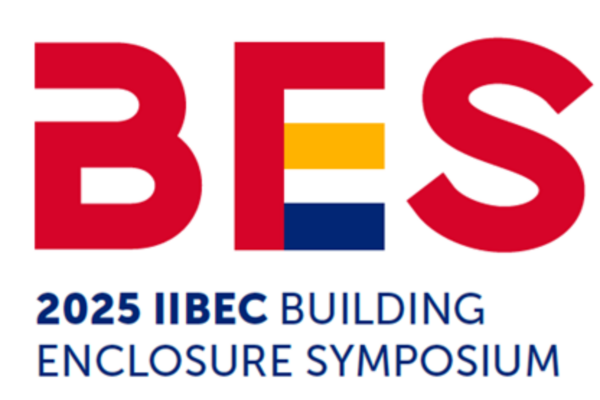
Course Overview This session was originally presented at the 2025 IIBEC Building Enclosure Symposium in St. Louis, Missouri. This course includes the following components: recording of the live session a summative assessment consisting of 10 multiple-choice questions two surveys required to claim continuing education credit Description Understanding water vapor, vapor drive, air leakage, and condensation in new and existing healthcare/humidified buildings (in northern climates) is vital to maintain building construction integrity, indoor air quality, and occupant health. This presentation explores common causes of condensation and water accumulation issues specific to healthcare facilities from a technical building enclosure perspective. Common past performance issues, design considerations to alleviate those issues, and testing protocols prior to construction to validate the performance of the proposed enclosure system design will be discussed along with upcoming energy code changes that directly impact condensation risk potential and energy code path decisions. Course Recommended Prerequisite(s) N/A IIBEC Core Competencies: Exterior Walls (EW), Roofing (R) Knowledge Level: Intermediate Presenter/Author Allison McSherry, RA, BECxP, CxA+BE, LEED AP BD+C, CEM, NCARB Associate V Klein and Hoffman Inc. Allison McSherry specializes in building enclosure commissioning, consulting, and investigation along with energy modeling of building enclosures. She has shared her energy modeling and energy code expertise with architects, engineers, code officials, and contractors through a variety of certified continuing education courses and webinars, including developing and delivering three courses with the Illinois Building Industry Training and Education (BITE) program serving more than 600 industry professionals. In addition, she has performed LEED energy modeling, LEED facilitation, retrocommissioning investigations, THERM, and EPAct 179D energy modeling and analysis. Presenter/Author Brian Mathus, RA, BECxP, CxA+BE Associate V Klein & Hoffman Brian Mathus is a licensed architect at Klein & Hoffman in Chicago, Illinois, and an alumnus of the University of Illinois – Urbana Champaign (UIUC) Master of Architecture program. He provides building enclosure commissioning, consulting, and investigative services for healthcare, industrial, and residential buildings throughout Chicago and the Midwest. Mathus began his career in the field of enclosure restoration, and he applies this experience to the construction of new buildings. Disclaimer The views and opinions expressed in the session content at the 2025 IIBEC Building Enclosure Symposium are those of the content author(s)/speaker(s) and do not necessarily reflect the policies or positions of the International Institute of Building Enclosure Consultants (IIBEC). IIBEC makes no warranty, whether express or implied, as to the completeness, accuracy or validity of the information provided. Course Access Courses are accessible in LearnUpon for one year from the date of purchase. Credit Start Date 5/22/2025 Credit Expiration Date 5/22/2028 Continuing Education Credit Statement This course is approved for 1.0 IIBEC CEH This course is approved for 1.0 AIA LU/HSW AIA Course Number: BES25_18_OD AIA Provider Number: G024 Continuing Education Credit Claim Information To claim IIBEC CEHs, learners are required to: Achieve a passing score of 70% on the summative assessment (learners are provided unlimited attempts) Complete the course Evaluation & Attestation Survey After completing the Evaluation & Attestation Survey, learners will be able to download a Certificate of Completion. Learners are responsible for self-reporting IIBEC CEH credit by uploading their Certificate of Completion to their IIBEC Portal. For assistance in self-reporting CEHs, please reach out to: [email protected] To claim AIA LU, learners are required to complete the above requirements, as well as: Complete the AIA Survey (AIA member number is required) AIA continuing education Learning Units earned upon completion of this course will be reported to AIA CES for AIA members. AIA CES Provider statement IIBEC is a registered provider of AIA-approved continuing education under Provider G024. All registered AIA CES Providers must comply with the AIA Standards for Continuing Education Programs. Any questions or concerns about this provider or this learning program may be sent to AIA CES ([email protected] or (800) AIA 3837, Option 3). This learning program is registered with AIA CES for continuing professional education. As such, it does not include content that may be deemed or construed to be an approval or endorsement by the AIA of any material of construction or any method or manner of handling, using, distributing, or dealing in any material or product. AIA continuing education credit has been reviewed and approved by AIA CES. Learners must complete the entire learning program to receive continuing education credit. AIA continuing education Learning Units earned upon completion of this course will be reported to AIA CES for AIA members. Certificates of Completion for both AIA members and non-AIA members are available upon request. Read more
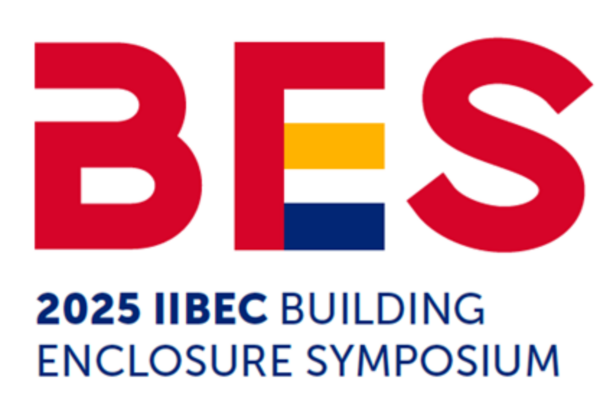
Course Overview This session was originally presented at the 2025 IIBEC Building Enclosure Symposium in St. Louis, Missouri. This course includes the following components: recording of the live session a summative assessment consisting of 10 multiple-choice questions two surveys required to claim continuing education credit Description This presentation aims to illuminate the interrelationships between common building and energy conservation codes and how such codes could be improved. The target audience includes Architects, Building Code Officials, Roof System Designers, Building Owners, and Contractors who have an interest in the subject matter. This session will review the 2024 edition of the international codes (I-codes) and will discuss why it’s time to adopt a new strategy for low-slope roof design that encourages a balanced approach across all categories, leading to resilient roof assemblies that perform well over the long term. A review of the building and related codes relevant to low-slope roof design that are based on International Energy Conservation Code prescriptive provisions along with how code provisions are based on new construction will take place. Roof design principles and how pointers are used in the I-codes and an examination of how an expanded use of pointers would bring clarity across code disciplines will also be discussed. This session will also review three different case studies on the following topics. Case Study 01: The Reroof Thickness Problem: Walk through the common reroofing design challenge where height limitations make compliance with building and energy conservation codes at odds with each other. Case Study 02: The Cool Roof Condensation Problem: Discuss common situations where a lack of flexibility in code provisions may result in condensation within or under highly reflective white roofs. Case Study 03: The Roof System Material Problem: Discuss typical situations during the design and construction process where roof assemblies may stray from code compliance. Course Recommended Prerequisite(s) Attendees should have a general understanding of typical low-slope roof components and installation challenges. IIBEC Core Competencies: Roofing (R) Knowledge Level: Intermediate Presenter/Author Jason Wilen Associate Principal Klein & Hoffman Jason P. Wilen, AIA, NCARB, CDT, RRO, is a board-certified architect and building enclosure specialist with over 30 years of experience. Wilen joined the Chicago office of Klein & Hoffman (K&H) in 2018 and is now an associate principal. Before K&H, he served seven years as a director with the National Roofing Contractors Association technical services section and 18 years with architectural, forensic and roof consulting firms. He holds a bachelor of architecture from the Illinois Institute of Technology, Chicago, and is a licensed architect in Illinois, Michigan, Minnesota, Maryland, New Jersey, North Carolina, Pennsylvania, Tennessee, Texas, and Wisconsin. Wilen provides leadership for K&H’s roof system and waterproofing rehabilitation projects, participates in enclosure commissioning efforts, provides litigation support, and consults for building and energy code development. Additionally, he is a voting member of ASTM Committees D08 – Roofing & Waterproofing, C16 – Thermal Insulation, and E60 – Sustainability, and he serves on UL’s Technical Committee 580: Safety Testing for Uplift Resistance of Roof Assemblies. Wilen has authored over 25 feature articles for local and national trade journals and magazines. In 2022, he was awarded IIBEC’s Richard M. Horowtiz Award, honoring the best technical article published in its technical journal, IIBEC Interface. Disclaimer The views and opinions expressed in the session content at the 2025 IIBEC Building Enclosure Symposium are those of the content author(s)/speaker(s) and do not necessarily reflect the policies or positions of the International Institute of Building Enclosure Consultants (IIBEC). IIBEC makes no warranty, whether express or implied, as to the completeness, accuracy or validity of the information provided. Course Access Courses are accessible in LearnUpon for one year from the date of purchase. Credit Start Date 7/17/2025 Credit Expiration Date 7/17/2028 Continuing Education Credit Statement This course is approved for 1.0 IIBEC CEH This course is approved for 1.0 AIA LU Elective AIA Course Number: BES25_14_OD AIA Provider Number: G024 Continuing Education Credit Claim Information To claim IIBEC CEHs, learners are required to: Achieve a passing score of 70% on the summative assessment (learners are provided unlimited attempts) Complete the course Evaluation & Attestation Survey After completing the Evaluation & Attestation Survey, learners will be able to download a Certificate of Completion. Learners are responsible for self-reporting IIBEC CEH credit by uploading their Certificate of Completion to their IIBEC Portal. For assistance in self-reporting CEHs, please reach out to: [email protected] To claim AIA LU, learners are required to complete the above requirements, as well as: Complete the AIA Survey (AIA member number is required) AIA continuing education Learning Units earned upon completion of this course will be reported to AIA CES for AIA members. AIA CES Provider statement IIBEC is a registered provider of AIA-approved continuing education under Provider G024. All registered AIA CES Providers must comply with the AIA Standards for Continuing Education Programs. Any questions or concerns about this provider or this learning program may be sent to AIA CES ([email protected] or (800) AIA 3837, Option 3). This learning program is registered with AIA CES for continuing professional education. As such, it does not include content that may be deemed or construed to be an approval or endorsement by the AIA of any material of construction or any method or manner of handling, using, distributing, or dealing in any material or product. AIA continuing education credit has been reviewed and approved by AIA CES. Learners must complete the entire learning program to receive continuing education credit. AIA continuing education Learning Units earned upon completion of this course will be reported to AIA CES for AIA members. Certificates of Completion for both AIA members and non-AIA members are available upon request. Read more
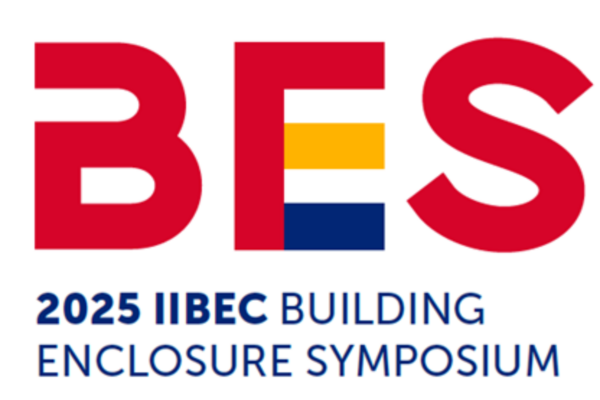
Course Overview This session was originally presented at the 2025 IIBEC Building Enclosure Symposium in St. Louis, Missouri. This course includes the following components: recording of the live session a summative assessment consisting of 10 multiple-choice questions two surveys required to claim continuing education credit Description As practicing building enclosure consultants, each of us have project success stories - highlight reels showcasing our expertise. These success stories look great in a case study and often make great presentations. This is not one of those presentations. Instead, this session offers a candid look at a real-world roofing design project. There are no perfect solutions here, just an honest project exploration including missed shots, overlooked opportunities, and how to recover from these. We will dive into mid- to high-level project challenges that many of us encounter. Beyond technical issues, this session will explore business, liability, and coordination pitfalls. Topics will include early-stage assumptions, evolving scopes, and how construction sequencing can quietly derail the best-laid plans. Attendees will be encouraged to engage in discussion around real project decisions, solutions that worked (or didn’t), and what alternative paths might have led to better outcomes. It's a session for those who appreciate the value of hard-earned experience and aren't afraid to talk about the bumps along the way. Course Recommended Prerequisite(s) N/A IIBEC Core Competencies: Below Grade / Waterproofing, Exterior Walls Knowledge Level: Intermediate Speaker/Author Jonathan Cannon, RRC, REWC, RRO, REWO, CDT Hollon+Cannon Group, LLC Jonathan Cannon is the owner and managing principal of Hollon+Cannon Group, LLC, a specialized architectural firm based in Austin, Texas, dedicated to building enclosure solutions. With over 24 years of industry experience, Cannon has expertise in both new construction and existing building restoration projects. His comprehensive knowledge spans assessment, design, construction, and project management, enabling him to deliver tailored solutions that align with the specific needs of owners, clients, and contractors. As a founding member of the IIBEC Central Texas Chapter and though continued efforts with IIBEC, Cannon has played a notable role in advising and advancing the building enclosure industry throughout the state of Texas. He currently serves as the IIBEC Region IV director, representing Texas, Oklahoma, Arkansas, Louisiana, and Mexico. Over the years, he has contributed to numerous IIBEC committees, task forces, and strategic planning initiatives. His dedication has been recognized with prestigious honors, including the Emerging Professional Award (2015), the Michael DeFrancesco Award (2017), and the Outstanding Volunteer Award (2021). Disclaimer The views and opinions expressed in the session content at the 2025 IIBEC Building Enclosure Symposium are those of the content author(s)/speaker(s) and do not necessarily reflect the policies or positions of the International Institute of Building Enclosure Consultants (IIBEC). IIBEC makes no warranty, whether express or implied, as to the completeness, accuracy or validity of the information provided. Course Access Courses are accessible in LearnUpon for one year from the date of purchase. Credit Start Date 7/18/2025 Credit Expiration Date 7/18/2028 Continuing Education Credit Statement This course is approved for 1.0 IIBEC CEH This course is approved for 1.0 AIA LU/HSW AIA Course Number: BES25_03_OD AIA Provider Number: G024 Continuing Education Credit Claim Information To claim IIBEC CEHs, learners are required to: Achieve a passing score of 70% on the summative assessment (learners are provided unlimited attempts) Complete the course Evaluation & Attestation Survey After completing the Evaluation & Attestation Survey, learners will be able to download a Certificate of Completion. Learners are responsible for self-reporting IIBEC CEH credit by uploading their Certificate of Completion to their IIBEC Portal. For assistance in self-reporting CEHs, please reach out to: [email protected] To claim AIA LU, learners are required to complete the above requirements, as well as: Complete the AIA Survey (AIA member number is required) AIA continuing education Learning Units earned upon completion of this course will be reported to AIA CES for AIA members. AIA CES Provider statement IIBEC is a registered provider of AIA-approved continuing education under Provider G024. All registered AIA CES Providers must comply with the AIA Standards for Continuing Education Programs. Any questions or concerns about this provider or this learning program may be sent to AIA CES ([email protected] or (800) AIA 3837, Option 3). This learning program is registered with AIA CES for continuing professional education. As such, it does not include content that may be deemed or construed to be an approval or endorsement by the AIA of any material of construction or any method or manner of handling, using, distributing, or dealing in any material or product. AIA continuing education credit has been reviewed and approved by AIA CES. Learners must complete the entire learning program to receive continuing education credit. AIA continuing education Learning Units earned upon completion of this course will be reported to AIA CES for AIA members. Certificates of Completion for both AIA members and non-AIA members are available upon request. Read more
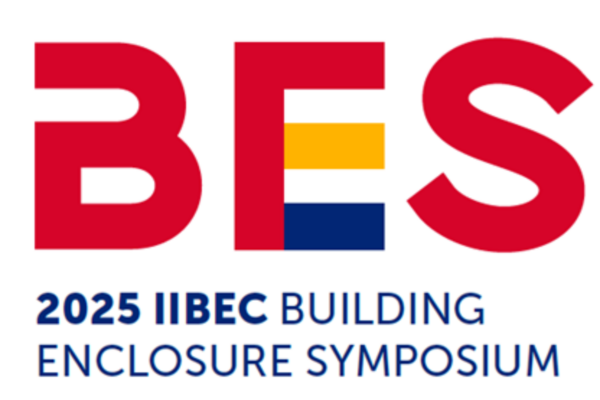
Course Overview This session was originally presented at the 2025 IIBEC Building Enclosure Symposium in St. Louis, Missouri. This course includes the following components: recording of the live session a summative assessment consisting of 10 multiple-choice questions two surveys required to claim continuing education credit Description Parapets and guardrails often overlap in purpose when they are located at the edge of a terrace, balcony, or roof. To make matters more complicated, these “secondary architectural elements” may directly impact the building enclosure in terms of water management, air, and thermal control. These key issues come into play during the design, construction, and service of the building as these architectural elements have a unique array of considerations for a very complicated location. The structural, thermal, safety, waterproofing/roofing, and aesthetics of the enclosure all need to be considered and coordinated. The intersection of regulatory requirements (such as codes and local ordinances) with good design, detailing, and maintenance practices can help promote long lasting parapets and guardrails for years to come without degrading the performance of the building enclosure. Course Recommended Prerequisite(s) N/A IIBEC Core Competencies: Exterior Walls (EW), Roofing (R) Knowledge Level: Intermediate Course Access Courses are accessible in LearnUpon for one year from the date of purchase. Presenter/Author John Graz, RRC, AIA, NCARB Senior Specialist BPL Enclosure John Graz has 30 years of experience with architectural investigations, design, and restoration of building enclosures. Projects range from historic preservation to new construction peer review and design assistance. He uses his extensive background in project management and as a team facilitator to assess, design, and provide construction administration of roof, facade, and plaza projects. Disclaimer The views and opinions expressed in the session content at the 2025 IIBEC Building Enclosure Symposium are those of the content author(s)/speaker(s) and do not necessarily reflect the policies or positions of the International Institute of Building Enclosure Consultants (IIBEC). IIBEC makes no warranty, whether express or implied, as to the completeness, accuracy or validity of the information provided. Credit Start Date 5/22/2025 Credit Expiration Date 5/22/2028 Continuing Education Credit Statement This course is approved for 1.0 IIBEC CEH This course is approved for 1.0 AIA LU/HSW AIA Course Number: BES25_10_OD AIA Provider Number: G024 Continuing Education Credit Claim Information To claim IIBEC CEHs, learners are required to: Achieve a passing score of 70% on the summative assessment (learners are provided unlimited attempts) Complete the course Evaluation & Attestation Survey After completing the Evaluation & Attestation Survey, learners will be able to download a Certificate of Completion. Learners are responsible for self-reporting IIBEC CEH credit by uploading their Certificate of Completion to their IIBEC Portal. For assistance in self-reporting CEHs, please reach out to: [email protected] To claim AIA LU, learners are required to complete the above requirements, as well as: Complete the AIA Survey (AIA member number is required) AIA continuing education Learning Units earned upon completion of this course will be reported to AIA CES for AIA members. AIA CES Provider statement IIBEC is a registered provider of AIA-approved continuing education under Provider G024. All registered AIA CES Providers must comply with the AIA Standards for Continuing Education Programs. Any questions or concerns about this provider or this learning program may be sent to AIA CES ([email protected] or (800) AIA 3837, Option 3). This learning program is registered with AIA CES for continuing professional education. As such, it does not include content that may be deemed or construed to be an approval or endorsement by the AIA of any material of construction or any method or manner of handling, using, distributing, or dealing in any material or product. AIA continuing education credit has been reviewed and approved by AIA CES. Learners must complete the entire learning program to receive continuing education credit. AIA continuing education Learning Units earned upon completion of this course will be reported to AIA CES for AIA members. Certificates of Completion for both AIA members and non-AIA members are available upon request. Read more

Course Overview This session was originally presented at the 2025 IIBEC Building Enclosure Symposium in St. Louis, Missouri. This course includes the following components: recording of the live session a summative assessment consisting of 10 multiple-choice questions two surveys required to claim continuing education credit Description This presentation will offer an overview of the new ASCE 7 tornado provisions and provide updated design guidance regarding roof and wall wind-borne debris (WBD), including recommendations for specifying test missiles, as a function of the building Risk Category and tornado speed. Additionally, recommendations will be provided for modifying the test method given in the ASCE Prestandard for Performance-Based Wind Design, so that it is applicable to tornado design. The presentation will review best practices for roof and wall assembly design guidance to minimize the potential for building enclosure elements to become WBD. Special attention is needed in the design of the building enclosure to minimize interior building damage and to avoid occupancy disruption. The goal of this presentation is to provide updated comprehensive guidance that designers can use in conjunction with the new ASCE 7 tornado provisions. Course Recommended Prerequisite(s) A general understanding of building enclosure wind design. Familiarity with building enclosure design for Risk Category III and IV buildings. A general awareness of the tornado building enclosure design provisions from the 2022 edition of ASCE 7. Familiarity with the wind-borne debris provisions in the ASCE 7 hurricane-prone region. NOTE: Those with intermediate or minimal knowledge of the above are also encouraged to attend this session as the format of this presentation will be as such that attendees will not be overwhelmed. IIBEC Core Competencies: Building Enclosure Knowledge Level: Advanced Course Access Courses are accessible in LearnUpon for one year from the date of purchase. Speaker/Author Tom Smith, RRC, AIA, F.SEI Lake In The Hills, IL Tom Smith specializes in forensic architecture and architectural technology and research, with an emphasis on roof systems and wind performance of buildings. Smith received the Carl G. Cash Award from ASTM International in 2013 for his body of work regarding wind damage investigations. Also in 2013, he was promoted to Fellow-grade membership of ASCE’s Structural Engineering Institute. He has served on the ASCE 7 subcommittee on wind loads since 1990 and was involved in the development of the tornado chapter in the 2022 edition of ASCE 7. Disclaimer The views and opinions expressed in the session content at the 2025 IIBEC Building Enclosure Symposium are those of the content author(s)/speaker(s) and do not necessarily reflect the policies or positions of the International Institute of Building Enclosure Consultants (IIBEC). IIBEC makes no warranty, whether express or implied, as to the completeness, accuracy or validity of the information provided. Credit Start Date 7/17/2025 Credit Expiration Date 7/17/2028 Continuing Education Credit Statement This course is approved for 1.0 IIBEC CEH This course is approved for 1.0 AIA LU/HSW AIA Course Number: BES25_01_OD AIA Provider Number: G024 Continuing Education Credit Claim Information To claim IIBEC CEHs, learners are required to: Achieve a passing score of 70% on the summative assessment (learners are provided unlimited attempts) Complete the course Evaluation & Attestation Survey After completing the Evaluation & Attestation Survey, learners will be able to download a Certificate of Completion. Learners are responsible for self-reporting IIBEC CEH credit by uploading their Certificate of Completion to their IIBEC Portal. For assistance in self-reporting CEHs, please reach out to: [email protected] To claim AIA LU, learners are required to complete the above requirements, as well as: Complete the AIA Survey (AIA member number is required) AIA continuing education Learning Units earned upon completion of this course will be reported to AIA CES for AIA members. AIA CES Provider statement IIBEC is a registered provider of AIA-approved continuing education under Provider G024. All registered AIA CES Providers must comply with the AIA Standards for Continuing Education Programs. Any questions or concerns about this provider or this learning program may be sent to AIA CES ([email protected] or (800) AIA 3837, Option 3). This learning program is registered with AIA CES for continuing professional education. As such, it does not include content that may be deemed or construed to be an approval or endorsement by the AIA of any material of construction or any method or manner of handling, using, distributing, or dealing in any material or product. AIA continuing education credit has been reviewed and approved by AIA CES. Learners must complete the entire learning program to receive continuing education credit. AIA continuing education Learning Units earned upon completion of this course will be reported to AIA CES for AIA members. Certificates of Completion for both AIA members and non-AIA members are available upon request. Read more
Shopping Cart
Your cart is empty
